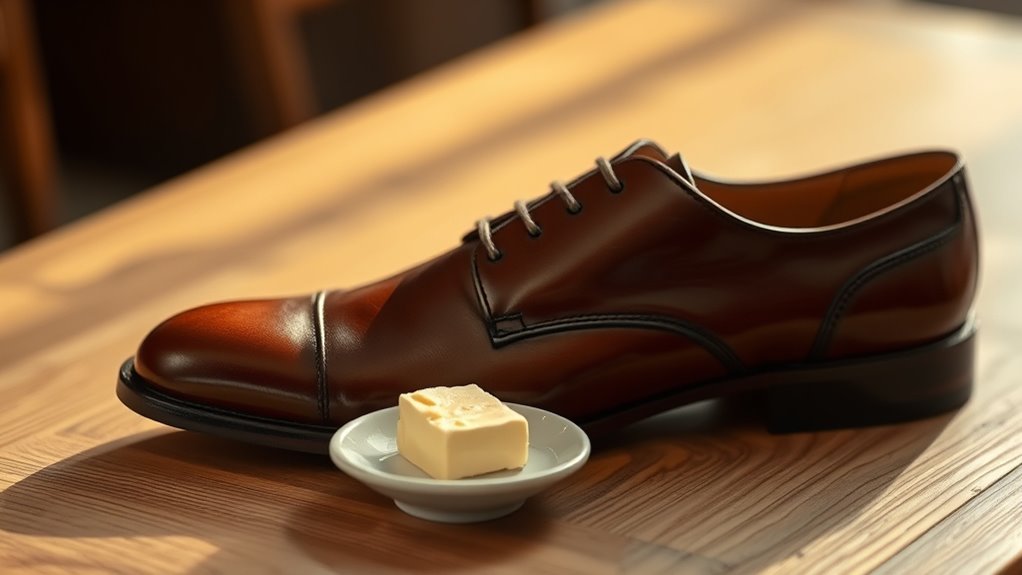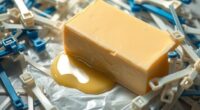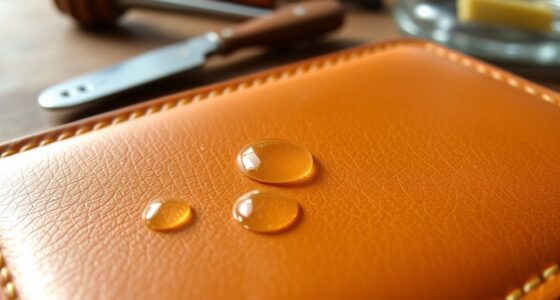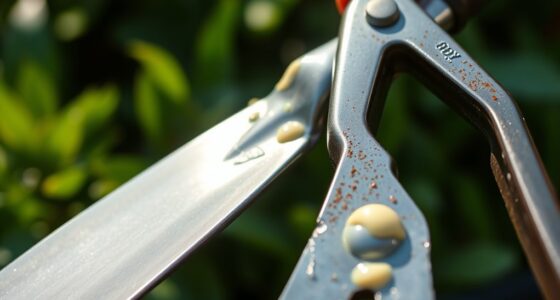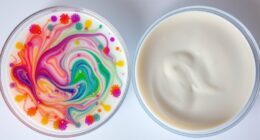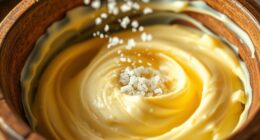Using butter as a leather conditioner has its pros and cons. It’s cost-effective, easily accessible, and keeps leather soft while preventing cracks. However, it can go rancid, leading to odors and mold. Over-application may leave a greasy residue that attracts dirt, making regular cleaning essential. While it provides natural benefits, you have to manage the risks carefully. Stick around to discover more insights about the best ways to use butter for your leather care.
Key Takeaways
- Butter effectively moisturizes leather, maintaining softness and flexibility while providing a natural protective layer against drying and cracking.
- It is a cost-effective and easily accessible alternative to commercial leather conditioners, often found in most kitchens.
- However, butter can spoil, leading to rancidity, unpleasant odors, and potential mold growth if not stored properly.
- Over-application may leave a greasy residue, making leather sticky and less suitable for frequently handled items like wallets or bags.
- Regular maintenance is necessary to prevent dust attraction and ensure leather items remain in good condition without spoilage risks.
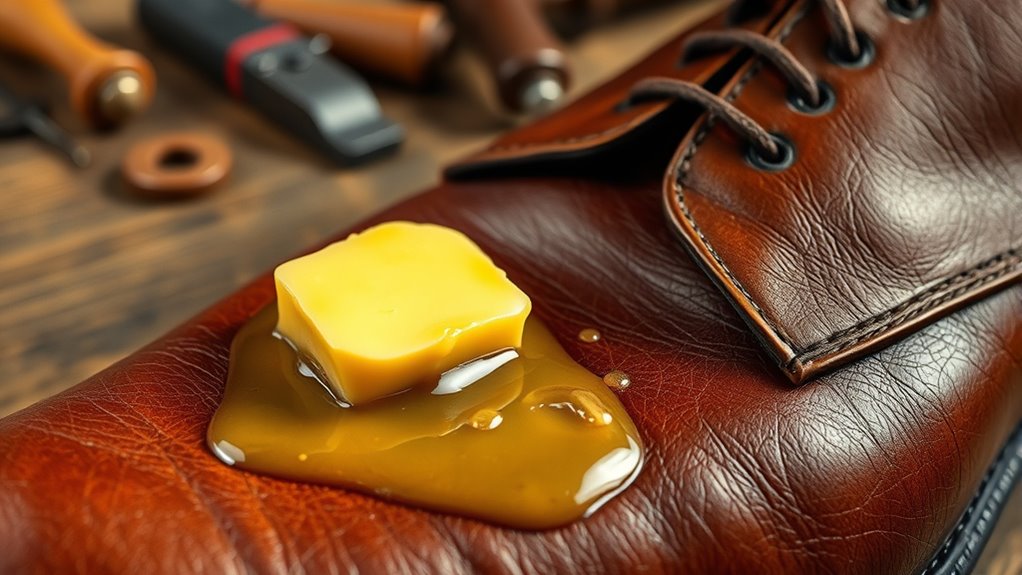
If you’re looking for a natural way to condition your leather goods, butter might just be the surprising solution you need. You might be skeptical at first, but butter can provide a level of natural preservation that commercial conditioners often lack. It’s rich in fats, which penetrate the leather and help to maintain its softness and flexibility. When you apply butter, you’re engaging in a simple chemical reaction that allows the fats to bond with the leather fibers, creating a protective layer that helps prevent cracking and drying.
However, before you delve into using butter on your leather items, it’s important to consider both the pros and cons. On the plus side, butter is a readily available and cost-effective option. You probably already have some in your kitchen, making it a convenient choice for conditioning leather. The natural ingredients mean you won’t be exposing your leather to harsh chemicals that can lead to deterioration over time. Plus, the moisturizing properties of butter can rejuvenate tired leather, restoring its original sheen. Additionally, staying informed about personal debt forgiveness bills can help you manage your finances better if you need to invest in leather care products.
But there are some drawbacks to using butter as well. One major concern is the potential for rancidity. Over time, butter can spoil, leading to unpleasant odors and possibly even mold growth if not stored properly. This is particularly important if you’re conditioning items that you won’t use frequently. You wouldn’t want your leather jacket to smell like old butter when you finally decide to wear it again. Additionally, butter can attract dust and dirt, which may require more frequent cleaning and maintenance.
Another factor to think about is the application process. While it’s easy enough to rub butter into the leather, you need to ensure that you don’t apply too much. Excess butter can leave a greasy residue that might take a while to fully absorb. It can also make the leather feel sticky, which isn’t ideal for items you handle often, like wallets or bags.
Frequently Asked Questions
Can Butter Be Used on All Types of Leather?
No, butter can’t be used on all types of leather. While it might work on some items, like soft, untreated leather, it can damage finished or exotic leathers. You should consider alternative conditioners specifically formulated for different types of leather. These products preserve the leather’s integrity and provide better protection. Always test any conditioner on a small, inconspicuous area first to ensure it won’t harm your leather goods.
How Often Should I Apply Butter to Leather?
You might worry that applying butter too often could damage your leather, but the right application frequency can actually prevent leather aging. Aim to condition your leather every 3 to 6 months, depending on how often you use it and the environment it’s in. If it looks dry or cracked, you might want to apply butter sooner. Just remember, a little goes a long way, so don’t overdo it!
Does Butter Leave a Greasy Residue on Leather?
Yes, butter can leave a greasy residue on leather. When you apply it, the fats can create greasy stains that are tough to remove. If you notice a residue, it’s best to act quickly. Gently blot the area with a clean cloth to absorb excess grease, and then use a leather cleaner designed for residue removal. Avoid rubbing, as that might damage the leather. Always test any product on a small, inconspicuous area first.
Can I Mix Butter With Other Leather Conditioners?
You can mix butter with other leather conditioners, but be cautious. While blending might enhance moisture, it can also compromise leather treatment safety. Consider using alternative natural conditioners that won’t interfere with the effectiveness of your primary product. Always test any mixture on a small area first to guarantee you’re not damaging your leather. Remember, it’s about keeping your leather soft and protected without risking long-term harm to its integrity.
Is There a Risk of Mold When Using Butter on Leather?
Yes, there’s a risk of mold growth when you use butter on leather. The fats in butter can attract moisture, creating an environment conducive to mold. If mold develops, it can lead to leather deterioration, ruining your item. To avoid this, consider using products specifically designed for leather care. They’re less likely to cause problems and will help maintain the quality of your leather without the unwanted risk that butter brings.
Conclusion
In summary, using butter as a leather conditioner can be a double-edged sword. While it may nourish your leather and bring a lustrous shine, the risk of rancidity and potential staining looms like a dark cloud. If you choose this path, be mindful of the type of leather and the frequency of application. Ultimately, knowing the pros and cons will help you make an informed choice, ensuring your leather stays as supple as a well-loved book.
